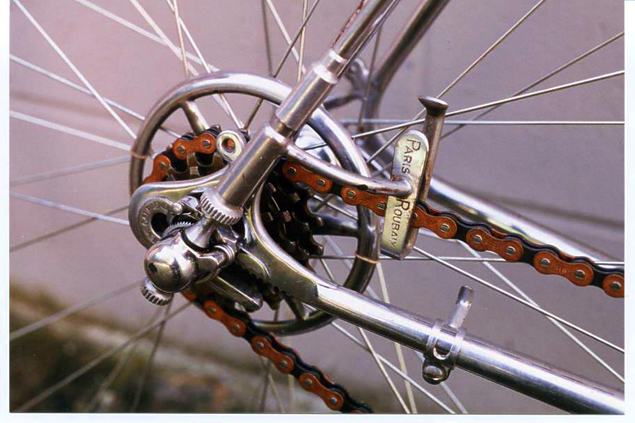-
The 'forward going benefits' wouldn't apply I think. On a normal fixed, when the cranks are at the deadpoint at 12 and 6 o'clock it's the 'lower' part of the chain which pulls the cranks through the deadspot. You wouldn't have this 'pull-effect' with a derailleur. The sturmey archer would be the easiest solution: http://www.sturmey-archer.com/en/products/detail/s3x-silver Alternatively, you could develop a new system on the basis of the old campagnolo paris-roubaix system which 'works' without a 'derailleur' (technically, it still has a derailleur but not in the sense of a modern derailleur which adjusts the chain slack):

-
On a normal fixed, when the cranks are at the deadpoint at 12 and 6 o'clock it's the 'lower' part of the chain which pulls the cranks through the deadspot.
If that's true, how do you ever make any forward progress on a freewheel bike? Think about it for a few seconds and you'll see why that old wives' tale about fixed is a steaming pile of shite. Anybody in any doubt about the matter from simple logic can go and check their polar curve on a Wattbike or such like to prove that nearly all cyclists with two more or less functional legs can generate forward torque through the whole 360°
 Sig_Arlecchino
Sig_Arlecchino gbj_tester
gbj_tester
Wouldn't be trying to skid, just want the general forward-going benefits of riding fixed but with a variable ratio.